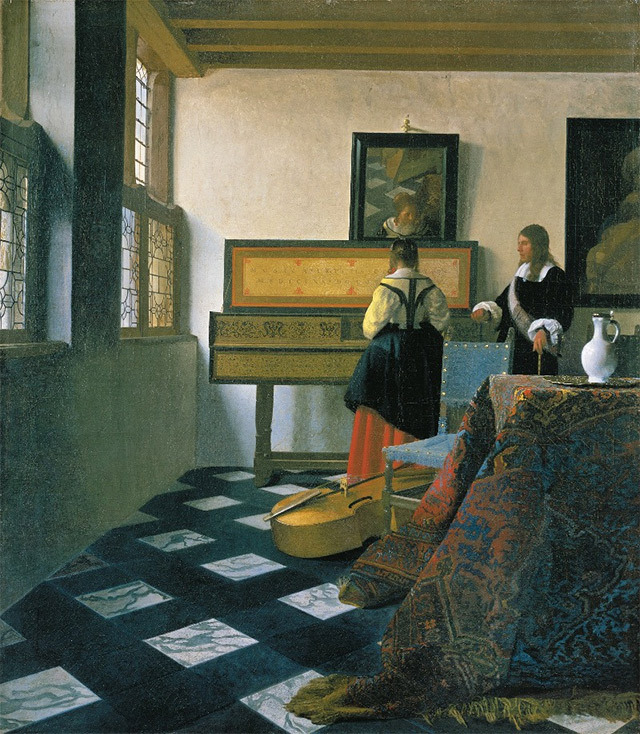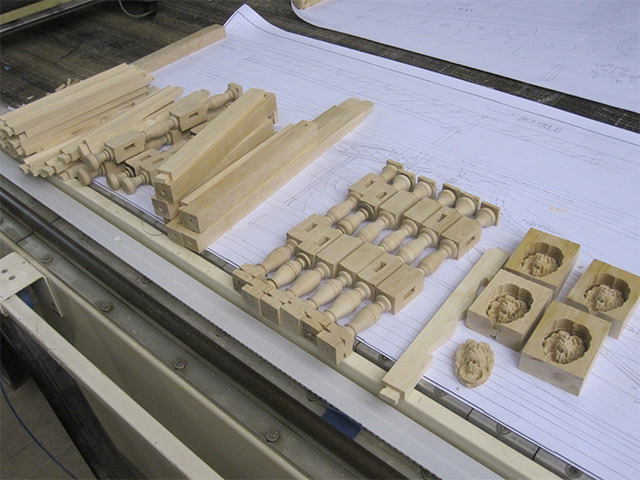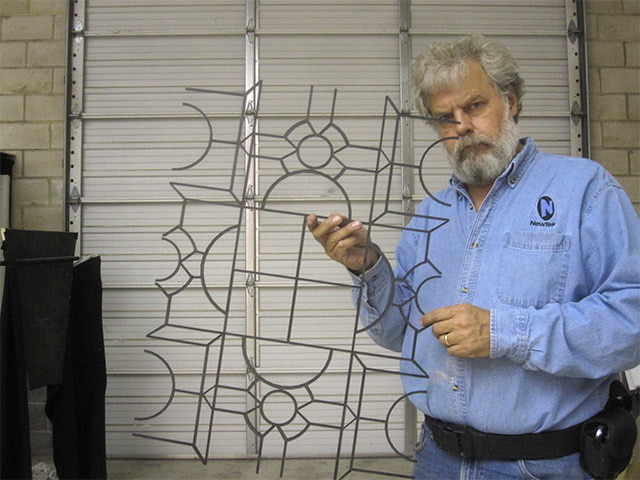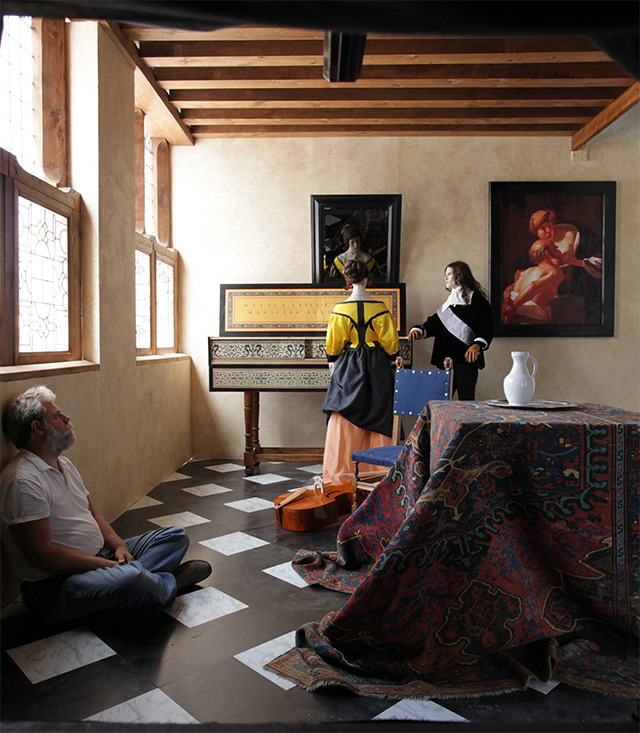Explanation of photorealistic painting by Jan Vermeer
 Jan Vermeer, “A Lesson in Music” (1662-1665)
Jan Vermeer, “A Lesson in Music” (1662-1665)Famous in the Amiga and Siggraph community, hacker Tim Jenison spent many months to reproduce the alleged painting technique used by Dutch artist Jan Vermeer in the mid-17th century. It remains unclear how he could create such photorealistic paintings a century and a half before the invention of photography.
As an expert in computer graphics, Tim Jenison was sure that the artist used some kind of image capture technique, including copying color. This is clearly indicated by some details of the paintings. For example, the texture of a white wall in the painting "Music Lesson".
Tim Jenison explains that the wall is painted the way a camera lens would capture it. The fact is that human vision adapts to lighting and simply can not detect the shadow on the wall with such a contrast. To an outsider, such an argument may seem dubious, but for an expert like Janison, this is completely reliable evidence that Vermeer used some technique of transferring the image to the canvas.
Jenison set himself the task of repeating the Vermeer method. The pinhole camera is not suitable for this purpose, because it does not provide the desired color rendering. Logically, Tim Jenison came to the conclusion that the Dutch painter somehow used a mirror to copy the image.

Tim Jenison tests a hypothesis with a mirror
To test the hypothesis, Jenison decided to recreate the original scene from the painting “Music Lesson”, and then draw it using a mirror, as Vermeer could do.
The experiment took eight (!) Months, Jenison found a suitable room and printed objects from a picture on a 3D printer, others were made on different machines.




In the end, he still managed to draw a picture from the mirror, repeating the original as much as possible.

Tim Janison’s picture The
crew worked all the time with Janison, who shot 2400 hours of video footage and edited an 80-minute documentary .
